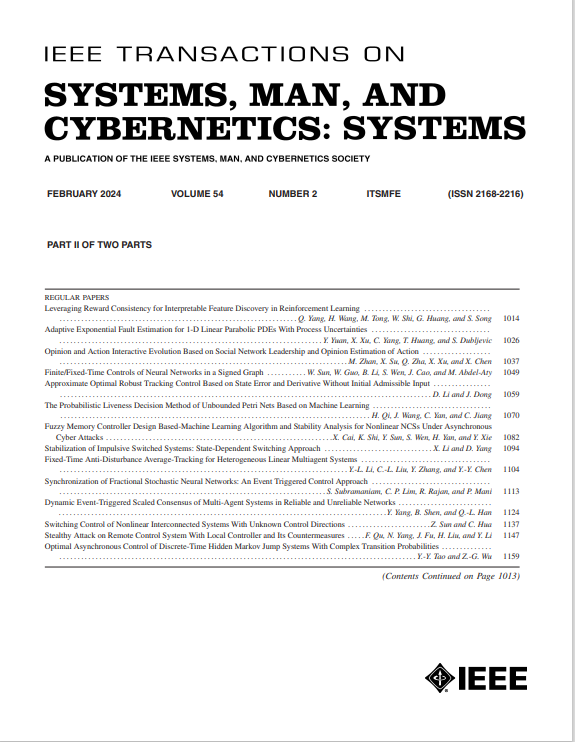基于神经网络的高维不完全数据潜在因素分析
IF 8.7
1区 计算机科学
Q1 AUTOMATION & CONTROL SYSTEMS
IEEE Transactions on Systems Man Cybernetics-Systems
Pub Date : 2025-07-16
DOI:10.1109/TSMC.2025.3583919
引用次数: 0
摘要
在各种与大数据相关的工业应用中,经常会遇到高维不完全矩阵(HDI),它描述了实体之间的复杂交互。HDI矩阵中完整的交互关系对于处理工业应用中的模式识别等各种问题至关重要。因此,估计HDI矩阵中的缺失数据是至关重要的。潜在因素分析(LFA)模型在解决这类问题方面取得了先进的成果。然而,现有的LFA模型无法对隐藏在HDI矩阵中的非线性结构进行建模。神经网络可以处理HDI数据中的非线性,但其较高的估计精度依赖于较高的计算成本和存储负担。为了解决上述问题,本文提出了一种新的NNLFA模型。它包含以下主要思想:1)通过神经网络可以有效地对HDI矩阵的非线性结构进行建模;2)将神经网络纳入LFA模型中,在保持较高的计算和存储效率的同时提高估计精度。为了验证NNLFA模型的优越性,在6个实际工业应用数据集上对6个最先进的模型进行了实验。实验结果表明,NNLFA模型的估计精度提高了33.3%。此外,与基线模型相比,NNLFA模型在时间和存储效率方面都表现出较强的竞争力。本文章由计算机程序翻译,如有差异,请以英文原文为准。
Neural Networks-Incorporated Latent Factor Analysis for High-Dimensional and Incomplete Data
high-dimensional and incomplete (HDI) matrices are commonly encountered in a variety of big data-related industrial applications, which describe complex interactions between entities. The complete interaction relationship in the HDI matrix is essential to deal with various problems such as pattern recognition in industrial applications. Therefore, estimating the missing data in the HDI matrix is crucial. latent factor analysis (LFA) models have achieved advanced results in solving such problems. However, the existing LFA models cannot model the nonlinear structure hidden in the HDI matrix. neural networks (NNs) can handle the nonlinearity in the HDI data, but their high estimation accuracy relies on high computation cost and storage burden. To address the aforementioned problems, this article proposes a novel NNLFA model. It contains the following primary ideas: 1) it can model the nonlinear structure of the HDI matrix efficiently through NNs and 2) it incorporates the NNs into the LFA model to improve estimation accuracy while maintaining high computational and storage efficiency. To validate the superiority of the NNLFA model, experiments with six state-of-the-art models are conducted on six practical industrial application datasets. The experimental results indicate that the NNLFA model enhances estimation accuracy by up to 33.3%. In addition, NNLFA model shows strong competitiveness in terms of both time and storage efficiency when compared to baseline models.
求助全文
通过发布文献求助,成功后即可免费获取论文全文。
去求助
来源期刊

IEEE Transactions on Systems Man Cybernetics-Systems
AUTOMATION & CONTROL SYSTEMS-COMPUTER SCIENCE, CYBERNETICS
CiteScore
18.50
自引率
11.50%
发文量
812
审稿时长
6 months
期刊介绍:
The IEEE Transactions on Systems, Man, and Cybernetics: Systems encompasses the fields of systems engineering, covering issue formulation, analysis, and modeling throughout the systems engineering lifecycle phases. It addresses decision-making, issue interpretation, systems management, processes, and various methods such as optimization, modeling, and simulation in the development and deployment of large systems.
 求助内容:
求助内容: 应助结果提醒方式:
应助结果提醒方式:


